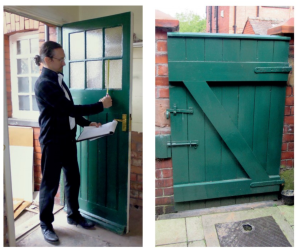 In Context 158 (on conservation in the Highlands and Islands and related issues), Heather Alcock offers an insight into how Local Listed Building Consent Orders (LLBCO’s) apply in Port Sunlight, offering a valuable chance to brush up your knowledge on this relatively new technical conservation policy issue!
In Context 158 (on conservation in the Highlands and Islands and related issues), Heather Alcock offers an insight into how Local Listed Building Consent Orders (LLBCO’s) apply in Port Sunlight, offering a valuable chance to brush up your knowledge on this relatively new technical conservation policy issue!
image: Context 158 p55
Summary background:
The Enterprise and Regulatory Reform Act of 2013 introduced local listed building consent orders (LLBCOs) to ‘establish well understood approaches to common issues of maintenance, repair or minor alteration, to increase certainty over the aspirations and requirements of all parties, and to save time and resource for owners and local planning authority alike’ (Historic England Advice Note 6, Drawing Up a Local Listed Building Consent Order).
Adopted in November 2015, the Port Sunlight LLBCO was one of the first in the country. Its contribution as a proactive heritage policy initiative was recognised with a Historic England Angel Award in 2016. Port Sunlight, the vision of industrialist William Lever, was built as a model village to house workers at his soap factory, Lever Brothers, which went on to become the global manufacturing giant Unilever (and has links to the Scottish islands of Harris and Lewis, which are the subject of separate articles in this edition of Context).
Find out more about how the LLBCO works in practice, and the lessons learned (and perhaps how you can apply these in your own local authority area) in the article.
Links to the Context Archive and linked search facility

